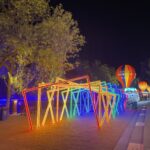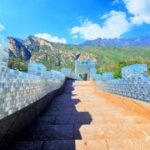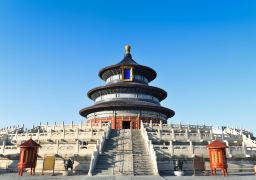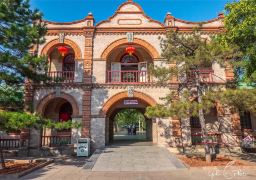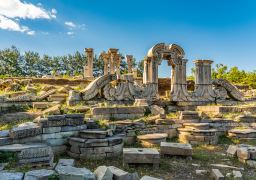Fengxian Hall is located on the east side of the three palaces in the inner court of the Forbidden City, originally constructed during the Yongle period of the Ming Dynasty. ‘Fengxian’ signifies the veneration of ancestors. Throughout the Ming and Qing dynasties, it served as the imperial family temple for the emperors to worship their ancestors. The hall is divided into two parts, connected by a passageway, forming a ‘work’-shaped architectural structure.
The rear hall displays the spirit tablets of emperors and empresses from various dynasties. On significant national holidays such as the Lunar New Year’s Day, Winter Solstice, and birthdays, the emperor would move the ancestral tablets to the front hall for worship. During the birthdays and death anniversaries of deceased emperors and empresses, as well as festivals like the Lantern Festival and Qingming Festival, the emperor would pay respects at the rear hall by offering incense. Today, Fengxian Hall has been transformed into the Clock Exhibition Hall, showcasing over 200 clocks and watches from the 18th century, manufactured both domestically and internationally. In ancient China, time was measured using sundials, water clocks, and shadow clocks. Towards the end of the Ming and the beginning of the Qing dynasty, European mechanical clocks and watches began to be introduced to China, gradually replacing traditional timekeeping devices. By the 18th century, the Qing court was extensively using mechanical clocks and watches. These timepieces were known for their accuracy, exquisite designs, vibrant colors, pleasant music, entertaining performances, and auspicious symbolism, which were highly favored by the emperors and empresses, becoming valuable decorations in the palace. Most of the clocks and watches from the Qing palace collection have been preserved to this day and are an important category in the collection of the Palace Museum. The Clock Exhibition Hall displays some of the finest pieces, including the bronze water clock, the rosewood pavilion-style large bell clock, the hardwood carved flower pavilion-style self-striking clock, the bronze-plated gold writing man clock, and the bronze-inlaid gold rooster animal seat pavilion-style watch, among others. Additionally, there are exhibition halls such as Qing Palace Manufacturing, Guangzhou Essence, Suzhou Charm, and French Selection, showcasing a variety of exquisite clocks and watches. Opening hours are from April 1st to October 31st, Tuesday to Sunday, 08:30-17:00; closed on Mondays. From November 1st to March 31st, Tuesday to Sunday, 08:30-16:30; closed on Mondays. On Qingming Festival, Labor Day, Dragon Boat Festival, Mid-Autumn Festival, and National Day, the opening hours are 08:30-17:00; on New Year’s Day and Spring Festival, the opening hours are 08:30-16:30. A must-see tip: there are clock demonstrations at 11:00 and 14:00 in the exhibition hall.The Palace Museum’s Clock Exhibition Hall
Fengxian Hall is located on the east side of the three palaces in the inner court of the Forbidden C[...]

